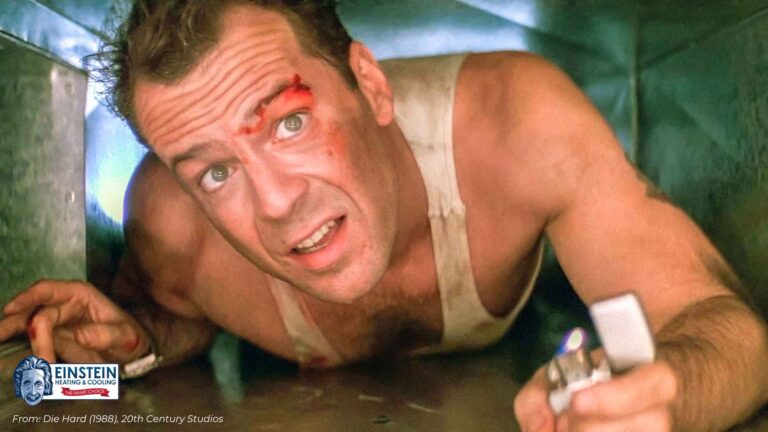The History of the Ventilation Trope in Movies
The ventilation trope in movies has a long and storied history, dating back to some of the earliest films. Here’s a look at its evolution through the decades:
- 1920s and 1930s:
- In the 1927 film “Metropolis,” the hero, Freder Fredersen, sneaks into the underground city through the ventilation system.
- In the 1931 film “M,” the serial killer Hans Beckert uses the ventilation system to escape from the police.
- 1960s and 1970s:
- The trope gained popularity in this era with films like “Mission: Impossible” (1966-1973), James Bond (1962-present), and “The Dirty Dozen” (1967), all featuring characters crawling through ventilation ducts.
- Recent Years:
- The trope continues to be used in recent films, including “Die Hard” (1988), “Mission: Impossible – Fallout” (2018), and “The Batman” (2022).
The Significance of the Ventilation Trope
While the ventilation trope is often employed for comedic effect, it also serves important cinematic purposes:
- Creating Suspense and Tension:
- Ventilation systems are used to create suspenseful chases, thanks to their narrow and cramped spaces, which evoke claustrophobia and danger.
- The trope is also known for the “Ventilation Shaft Death,” a shocking device to eliminate characters.
- Adding Intrigue and Ingenuity:
- Filmmakers use this trope to showcase characters’ resourcefulness and problem-solving skills, often in life-threatening situations.
- A Sense of Danger and Excitement:
- Ventilation systems allow filmmakers to inject a sense of danger and excitement into scenes, keeping audiences on the edge of their seats.
Common Ventilation System Tropes in Movies
Here are some recurring ventilation system tropes often seen in movies:
- The Stealthy Passageway: Ventilation systems are covert passageways used for sneaking around or escaping danger.
- The Suspenseful Chase: Cramped and narrow vents create suspenseful chases, adding claustrophobia and danger to scenes.
- The Ventilation Shaft Death: A character’s demise in a ventilation shaft, often used for shock value.
- The Ventilation System Monster: Monsters or creatures lurking in ventilation systems create suspense and fear.
- The Ventilation System Repair: Characters tasked with repairs only for colleagues to misuse the system for illicit activities.
Notable Examples of the Ventilation Trope in Movies
Several iconic movie scenes have featured characters navigating ventilation systems:
- “Die Hard” (1988): John McClane crawls through vents to escape terrorists in Nakatomi Plaza.
- “Mission: Impossible 1” (1996): Ethan Hunt and his team infiltrate the CIA through ducts.
- “Alien” (1979): The xenomorph uses vents to move around the Nostromo spaceship.
- “The Breakfast Club” (1985): John Bender escapes detention through the ventilation system.
- “Men in Black II” (2002): Alien worms infiltrate MIB headquarters via the ventilation system.
- “Escape from Alcatraz” (1979): Inmates escape Alcatraz through ventilation.
- “The Silence of the Lambs” (1991): Clarice Starling uses vents to reach Buffalo Bill’s basement.
- “Mission: Impossible – Fallout” (2018): Ethan Hunt hangs from a harness in the Burj Khalifa’s ventilation shaft.
Safety Warning: Vents in Real Life
While vents in movies appear spacious and convenient, real-life vents are cramped, dirty, and dangerous. Here are some essential tips if you ever find yourself stuck in a ventilation system:
- Stay calm and assess the situation.
- Move as little as possible.
- If you have a phone, call for help.
- Attract attention if possible.
- Be patient and wait for help.
Remember, safety first—crawling through vents in real life is not recommended due to the associated risks.








